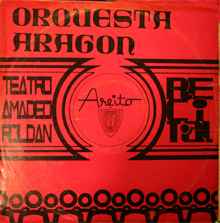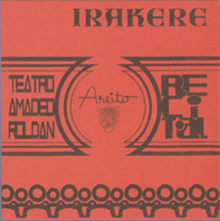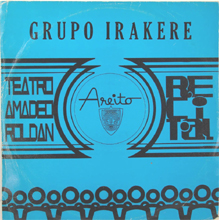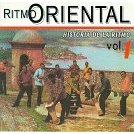Indice - Table of contents
New Stuff[hide]
Reportes: From The St... : Cubadisco 2...
Fotos: Tom Ehrlich
Staff: Kristina Lim
Musicos: Juan Formell
Musicos: Yordamis Megret Planes
Musicos: Yasser Morejón Pino
Musicos: José Luis "Changuito" Quintana...
Musicos: Dennis Nicles Cobas
Fotos: Eli Silva
Grupos: Ritmo Oriental : 1988 - Vol. IX - 30 a...
Musicos: Rafael Paseiro Monzón
Musicos: Jiovanni Cofiño Sánchez
Fotos: Tom Ehrlich : 2024 Monterey Jazz, P...
Resenas: Vacilón Santiaguero (Circle 9 ...
Photos of the Day [hide]
The Roots of Timba - Part II - Discographical Dementia
As the "perfect storm" gathered force, Ritmo Oriental was as productive as Los Van Van and even harder to keep track of. If you're as fascinated as I am with reconstructing this period in chronological order and hearing every important track, here are 3 links to discographies in progress.
Ritmo Oriental Partial Discography
EGREM Singles
EGREM LPs
As you can see from the Ritmo Oriental Discography, EGREM, in its infinite wisdom, failed to date the recording sessions or the vinyl releases. To make matters worse, almost none of the LPs had titles other than the name of the group. And to guarantee complete confusion for future generations, EGREM not only used different covers for the same albums, they also used the same covers for albums by completely different groups! For example, an LP by Orquesta Aragón uses the same cover as the first Irakere album, and each was released in both red and blue.



The second and third covers contain the same tracks, and, as a further bit of irony, none of the three contains a recital at Teatro Amadeo Roldán.
Thanks to a Havana musicologist named Cristóbal, we have a copy of EGREM's internal listings for Ritmo Oriental. Each song has two numbers. The "job number" starts with CA, CS or CP. "CA" stands for "Cera Areíto" (cera means wax, which was used in the early days of recording). Think, for example, of the famous Charlie Parker song "Max is Making Wax". "CS" is probably "Cera Siboney" and "CP" (only used once by la Ritmo) is "Cera Palma". The second number was simply the catalog number of the album (assuming the song was released). Areito LP numbers started with "LD" and 45s and EPs started with "EPA".
Throughout most of our Ritmo Oriental Discography, the two columns of numbers fit together logically except for one session, CA-718, which has no LP or EPA numbers, leaving us to assume that these recordings were never commercially released. Perhaps they were used as radio demos. With the exceptions of Que se sepa bien and Quién dice, which somehow found their way onto rare compilations, all of these songs also appear on later CA sessions. The separate CA number should mean they were re-recorded, and if that's the case, 7 of these original 9 recordings are probably lost. What we can say, however, is that these were the first 9 songs that Ritmo Oriental developed in the "perfect storm" period of the early 70s, so we'll cover them first, taking our musical examples from the later versions.
 The best way to acquire most of the best of these tracks is the 16-track QBADisc compilation, La historia de la Ritmo, Vol. 1. It contains most of the tracks from the first 5 CA sessions, minus the boleros, and has great documentation with exquisite liner notes by Brett Gollin.
The best way to acquire most of the best of these tracks is the 16-track QBADisc compilation, La historia de la Ritmo, Vol. 1. It contains most of the tracks from the first 5 CA sessions, minus the boleros, and has great documentation with exquisite liner notes by Brett Gollin.
Before concluding this sidetrip into discographical dementia, I'll repeated my urgent plea: write to EGREM. Try to explain to them that Fania is making money hand over fist by re-releasing their entire catalog with loving documentation and remastering. EGREM badly needs to do this with la Ritmo, and it needs to start over with Van Van and Irakere and do the job right. It's tragic that so much historic music is being neglected, so let's get on their case! Send letters, make phone calls, and send emails! Write to your congressman!
Getting back to the task at hand, we'll tackle the early masterpieces of la Ritmo in the order in which they were first recorded, beginning with the mysterious CA-718 session, which began with Ritmo Oriental's breakthrough hit, Mi socio Manolo. Note that all the songs in the next section were re-recorded in 1974 and those are the versions we'll be listening to. No one that we've encountered has ever heard the mysterious original CA-718 recordings. So we're listening to 1974 recordings of songs that the group began playing live around 1972.

















